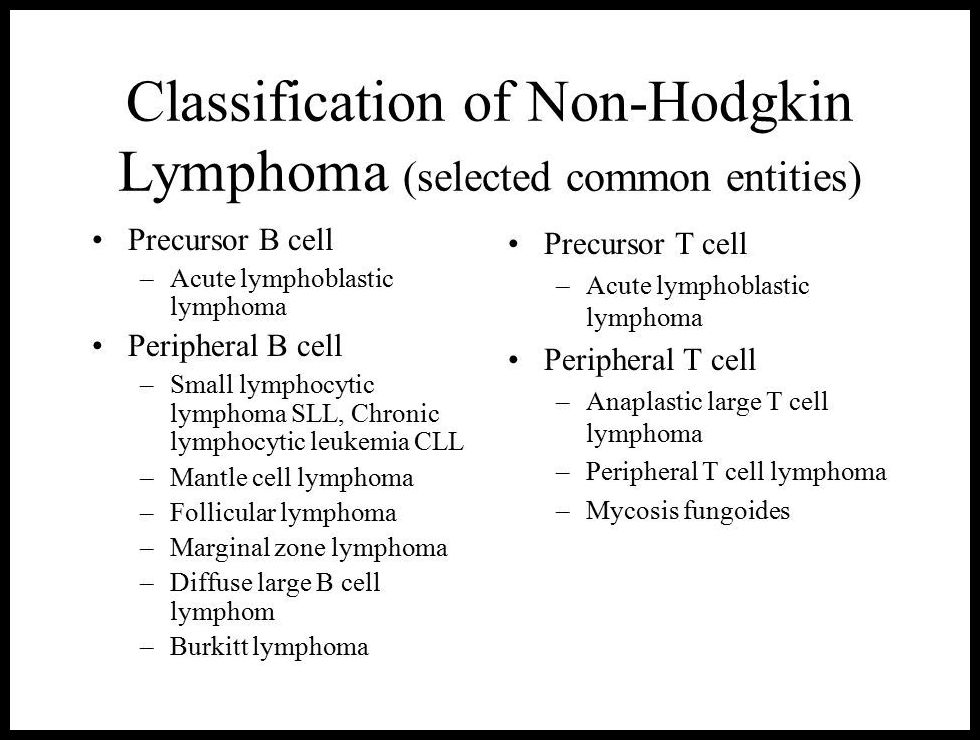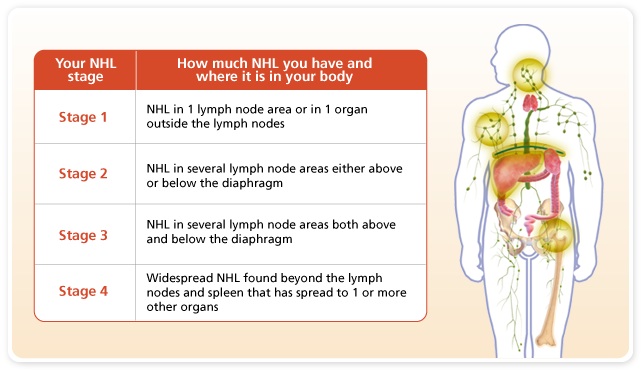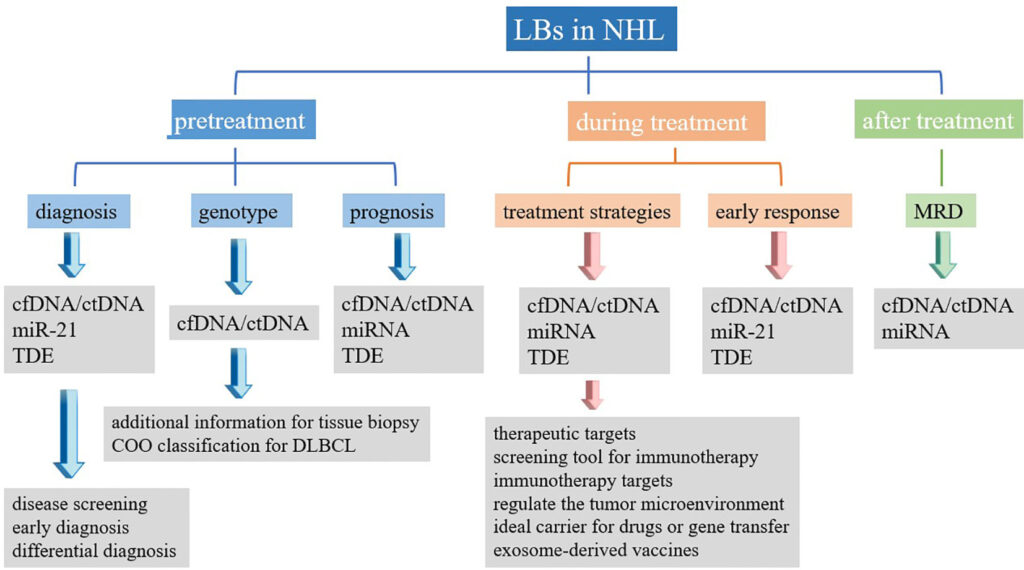Non-Hodgkin lymphoma, commonly referred to as NHL, is a type of cancer that originates in the lymphatic system. The lymphatic system plays a critical role in the body’s immune response, and when it becomes compromised by this disease, it can significantly impact overall health. This article explores the various types of non-Hodgkin lymphoma, its symptoms, how it is diagnosed, and the available treatment options.


Understanding Non-Hodgkin Lymphoma
Non-Hodgkin lymphoma occurs when abnormal cells in the lymphatic system grow uncontrollably. Unlike other cancers, it primarily affects the white blood cells known as lymphocytes, which are essential for fighting infections. These abnormal cells can accumulate in the lymph nodes, spleen, bone marrow, or other organs, disrupting their normal function.
Types of Non-Hodgkin Lymphoma
There are many different types of non-Hodgkin lymphoma, each classified based on the specific type of lymphocyte involved (B cells or T cells) and how quickly the cancer grows. Below are some of the most common types:
B-Cell Lymphomas
- Diffuse Large B-Cell Lymphoma: This is the most common type of aggressive lymphoma. It tends to grow quickly and can occur in lymph nodes or other parts of the body.
- Follicular Lymphoma: A slow-growing type of lymphoma that often starts in the lymph nodes. It may transform into a more aggressive form over time.
- Mantle Cell Lymphoma: A rare type of lymphoma that typically grows quickly and requires prompt treatment.
- Chronic Lymphocytic Leukemia/Small Lymphocytic Lymphoma: These two conditions are closely related and involve the slow growth of cancerous B cells.
T-Cell Lymphomas
- Anaplastic Large Cell Lymphoma: A rare type of lymphoma that can affect both children and adults. It often involves the skin or lymph nodes.
- Peripheral T-Cell Lymphoma: A group of aggressive lymphomas that originate from mature T cells.
- Cutaneous T-Cell Lymphoma: A type of lymphoma that primarily affects the skin, causing rashes or lesions.
Symptoms of Non-Hodgkin Lymphoma
The symptoms of this condition can vary depending on the type and stage of the disease. Some individuals may experience no symptoms at all, while others may notice significant changes in their health. Common signs include:
- Swollen lymph nodes in the neck, armpits, or groin that are usually painless
- Fever that persists without an apparent cause
- Night sweats that drench the bedding
- Unexplained weight loss
- Fatigue or weakness that does not improve with rest
- Shortness of breath or coughing if the cancer affects the chest area
- Itchy skin or rashes, especially in cases involving the skin
When to Seek Medical Attention
If you notice persistent swelling in your lymph nodes or any combination of the above symptoms, it is important to consult a healthcare professional. While these symptoms can be caused by less serious conditions, they should not be ignored, especially if they worsen over time.
Diagnosing Non-Hodgkin Lymphoma
Diagnosing this condition involves a series of tests and procedures to confirm the presence of cancer and determine its type and stage. Early and accurate diagnosis is crucial for developing an effective treatment plan.
Physical Examination
A doctor will begin by performing a thorough physical examination, paying close attention to the size, shape, and texture of swollen lymph nodes. They may also check for swelling in the liver or spleen.
Blood Tests
Blood tests are used to assess overall health and detect abnormalities in blood cell counts. While blood tests alone cannot diagnose this condition, they provide valuable information about how the disease might be affecting the body.
Imaging Tests
Imaging techniques such as CT scans, PET scans, and MRI scans are used to locate tumors and determine whether the cancer has spread to other parts of the body. These tests help doctors create a detailed picture of the disease’s progression.
Lymph Node Biopsy
A biopsy is the definitive way to diagnose this condition. During this procedure, a small sample of tissue is removed from an affected lymph node and examined under a microscope. This allows pathologists to identify the specific type of lymphoma present.
Bone Marrow Biopsy
In some cases, a bone marrow biopsy may be performed to check if the cancer has spread to the bone marrow. This involves removing a small sample of bone marrow from the hipbone using a needle.
Treatment Options for Non-Hodgkin Lymphoma
The treatment approach depends on several factors, including the type and stage of the disease, the patient’s age, overall health, and personal preferences. Below are the most common treatment options:
Watchful Waiting
For slow-growing types of this condition, immediate treatment may not be necessary. Instead, doctors may recommend a strategy called “watchful waiting,” where the patient is closely monitored for any changes in symptoms or disease progression.
Chemotherapy
Chemotherapy uses powerful drugs to kill cancer cells or stop them from growing. It is often used for aggressive types of this condition and may be combined with other treatments for better results.
Radiation Therapy
Radiation therapy involves using high-energy beams to target and destroy cancer cells. It is particularly effective for localized tumors or early-stage disease.
Immunotherapy
Immunotherapy harnesses the power of the immune system to fight cancer. Drugs such as monoclonal antibodies are designed to target specific proteins on cancer cells, making them more vulnerable to destruction.
Targeted Therapy
Targeted therapy focuses on specific molecules involved in the growth and survival of cancer cells. By blocking these molecules, targeted therapies can slow or stop the progression of the disease.
Stem Cell Transplant
Also known as a bone marrow transplant, this procedure replaces damaged bone marrow with healthy stem cells. It is often used after high-dose chemotherapy or radiation therapy to restore the body’s ability to produce healthy blood cells.
Alternative and Complementary Therapies
Some patients choose to incorporate alternative therapies, such as acupuncture, meditation, or dietary changes, into their treatment plans. While these approaches cannot cure the disease, they may help manage side effects and improve quality of life.
Living with Non-Hodgkin Lymphoma
A diagnosis of this condition can be overwhelming, but advancements in medical science have improved outcomes for many patients. Support from family, friends, and healthcare professionals is essential for navigating the challenges of treatment and recovery.
Managing Side Effects
Treatments like chemotherapy and radiation therapy can cause side effects such as nausea, fatigue, and hair loss. Patients should work closely with their healthcare team to manage these symptoms and maintain their quality of life.
Emotional and Mental Health Support
Dealing with a serious illness can take a toll on mental health. Counseling, support groups, and mindfulness practices can provide emotional relief and help patients cope with the psychological impact of the disease.
Diet and Lifestyle Changes
A balanced diet rich in fruits, vegetables, and lean proteins can support the immune system during treatment. Regular exercise, within the limits advised by a doctor, can also improve energy levels and overall well-being.
Research and Future Directions
Ongoing research continues to uncover new insights into the biology of this condition and develop innovative treatments. Clinical trials offer patients access to cutting-edge therapies that may not yet be widely available.
Promising Advances
Recent breakthroughs in immunotherapy and targeted therapy have shown great promise in treating even the most challenging cases. Scientists are also exploring the role of genetics in predicting disease behavior and tailoring personalized treatment plans.
Participating in Clinical Trials
Patients interested in contributing to medical research may consider enrolling in clinical trials. These studies test new treatments and interventions, offering hope for improved outcomes in the future.





